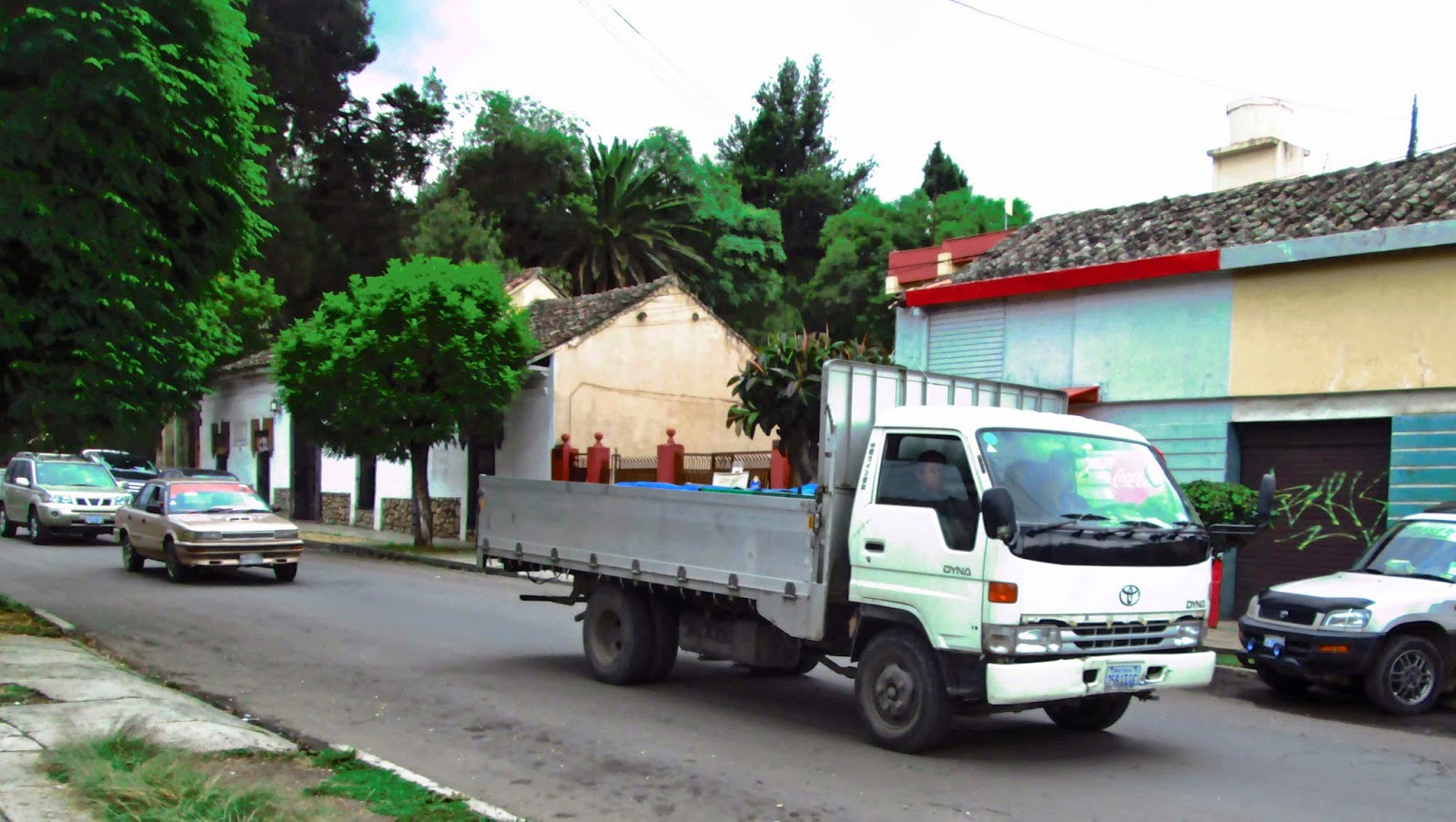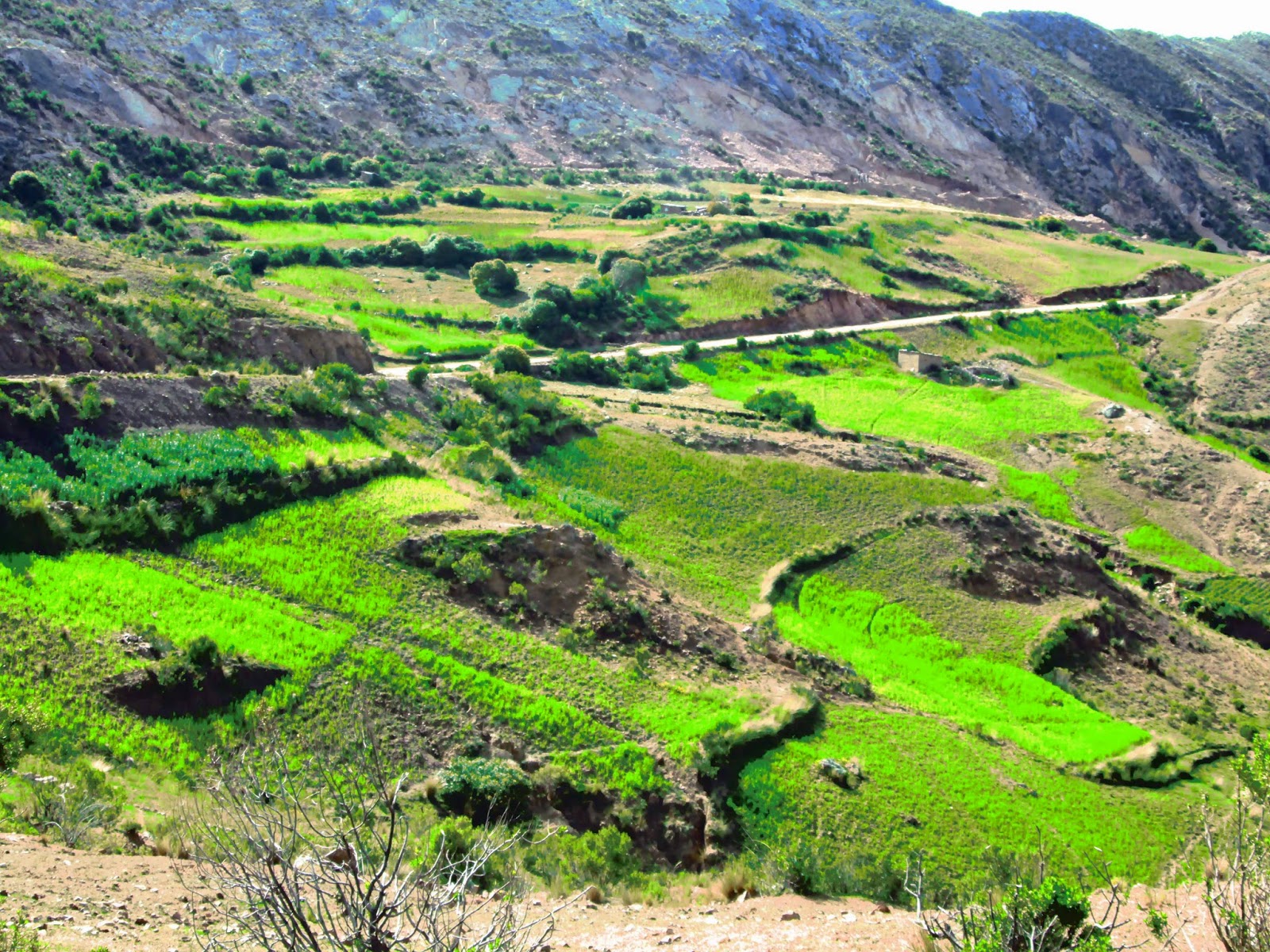And I got a look at the outside of my room.
The garden area was very pretty.
Here's a close up of one of the flowers.
And the swimming pool looked very nice too.
Our driver was there at 7 AM and we were quickly away to the airport. As we drove she explained that Santa Cruz is settled by "rings." That explained why we never seem to drive on a main street. Santa Cruz is now developing the 10th ring, and if I understood correctly, rings 5-10 are products of the 20-21st century.
We arrived at the Santa Cruz airport at 7:30 AM for our 9:30 AM flight and needed every minute of it. First we checked in through a kiosk to get our boarding pass. Then we stood in a very slow line to check luggage. The reason the line was so slow is that each passenger must fill out a "legal form with no mistakes" about name, entry into country, and leaving the country. Then we were told to go immediately to the gate for the flight.
When we went up an escalator to the boarding gate areas, we found two more lines. The first one involved basically turning in the departure part of a form we had filled out when entering the country. Then when done with that we went through a security search for narcotics. I was carrying two paperback books in my bag and ended up giving an English lesson. The title of one book was The Vicious Vet. The woman searching my bag wanted to know what the word, vet, meant. I explained a veterinarian is someone who cares for animals and because it is such a long word we usually just say vet.
When done with this I was invited into a dressing room for a pat down search by a woman officer. Then into a line for another search of the luggage. This time I was asked a question in Spanish and replied, "Sorry, English." Another officer came over and explained he spoke English, but I couldn't understand the next sentence he spoke. This was the only time when anyone spoke English that I had difficulty understanding. In fact I was surprised at how many people in Bolivia spoke English. I said, "no comprendo" and they let me go.
We walked through an small shops area and then finally were at the boarding gate. Segundo had a boarding zone that let him board immediately; I waited about ten minutes. I couldn't believe it. After the airline attendant reviewing my boarding pass, here again was another luggage search. By this point in time I was rather dumbfounded about the searches.
I had an interesting seat mate on the flight to Miami. She was a woman now old enough to be retired. She explained she had two sons in Santa Cruz and one daughter in Florida so she goes back and forth. She is a ceramic artist and had some pictures of her art on her phone to show me. Her "paid" work, assuming artists often need another job, was working with children who are deaf, teaching them sign language and also teaching them ceramic arts as a way to make a living. Talking with her made the trip go faster.
Now for immigration in Miami. Anyone who has traveled into the United States knows there is form everyone must fill out with name, where going in the United States, and what you are bringing into the United States. Well, Miami has a new thing. Now one does the same thing on a computer kiosk. When I had conquered this, the first thing the immigration officer said to me was "Why are you coming to the United States?" I told him I was coming to the United States because I lived there. I think he was simply talking on automatic pilot and didn't pay attention to what kind of passport I had. Then he threw away the form I had filled out on the airplane.
We found the luggage and then had to do the next step. Here we somehow got separated. I looked and looked and couldn't Segundo. I decided the best thing was to get to where the hotel shuttles stop and try to find the shuttle to my hotel. I was so glad Segundo finally found me, for I then used his phone to call the hotel for the shuttle to pick me up.
Got to the hotel and went down stairs to the restaurant for supper. On the TV over the bar area I kept seeing a basketball game and hearing Iowa State. I don't usually go to hotel bars for conversation, but curiosity got me and I went over to see what was happening, and so got updated on the NCAA tournament. This game ended quite dramatically, so I was very glad to see the final two minutes.
The next morning I went to the airport about 9:30. Without my phone I couldn't quite remember the exact time for my flight. Got checked in without any problem for a 1:30 PM flight. I couldn't believe, however, how rude were the TSA officers at this airport. I now has TSA pre-check status with Delta, but the TSA wasn't running the pre-check line when I started in the line. Then about two people in front of me, the line opened, and the TSA officers just yelled at us at how to do the pre-check line. Now the pre-check line is for experienced flyers. I don't think we need to be yelled at!
Later I went to buy some tissues because a respiratory infection was hitting me hard. I got yelled at too by the register attendant because I didn't have anything smaller than a $20.00 bill. I was glad to leave Miami, and have decided it's an airport to avoid if possible.
I had a lovely seat mate too on my flight to Minnesota. She is a woman with multiple sclerosis and is having problems now too with her optic nerve, making vision a difficulty. She had a large print book, but the light in the plane wasn't just quite right for her. So we just talked all the way from Miami to Minnesota.
I made it back to my building at 5:50 PM and went right to the property manager's office to see if they had my phone. Yes!! and in fact they had slid it under my apartment door, so even had I been delayed until after 6:00 PM and the office closed, I would have been reunited with my phone. As I said on Facebook, if I had to do such a stupid thing, I am glad I did it in such a safe place!
It was a great trip to Bolivia. If you have read the other posts about this trip you will have learned a great deal about the work of Mano a Mano. I hope some readers will consider a donation to Mano a Mano. Click here for the donation page. Another way to help if you are an Amazon customer is to use smile.amazon and designate Mano a Mano as the organization you wish to support. That way Amazon donates!!!



















































